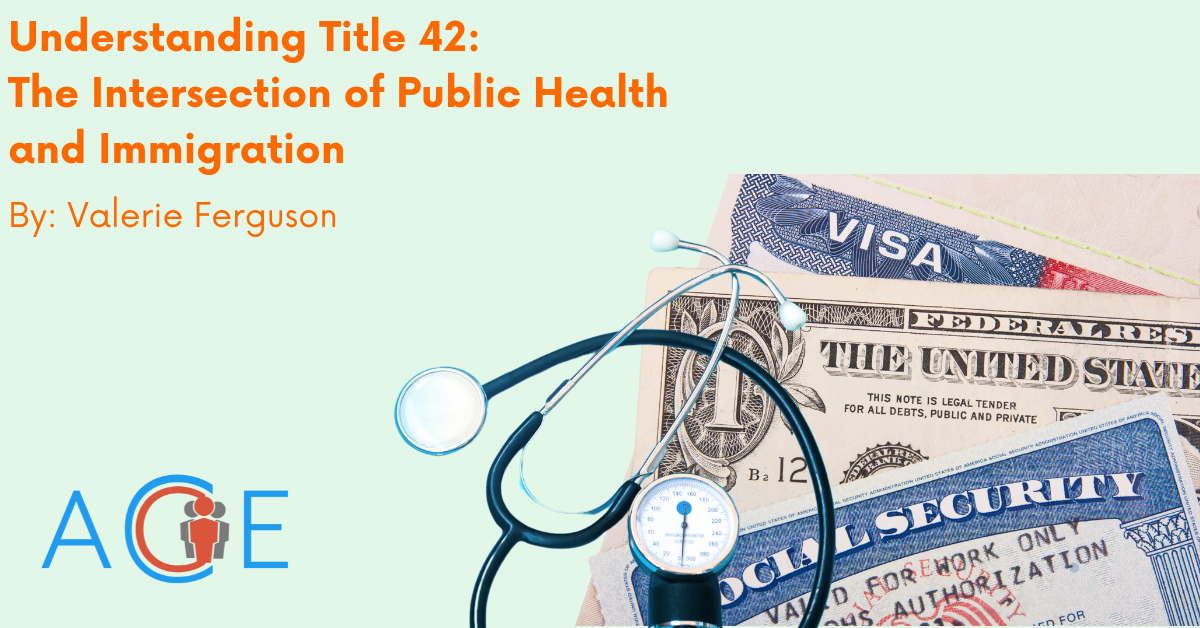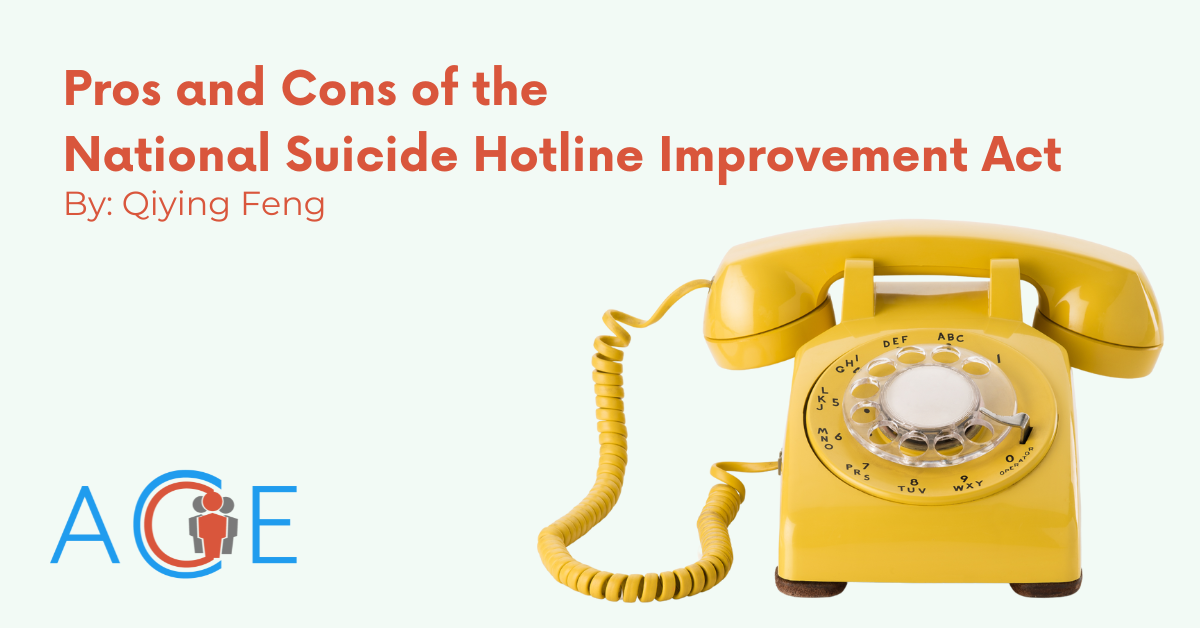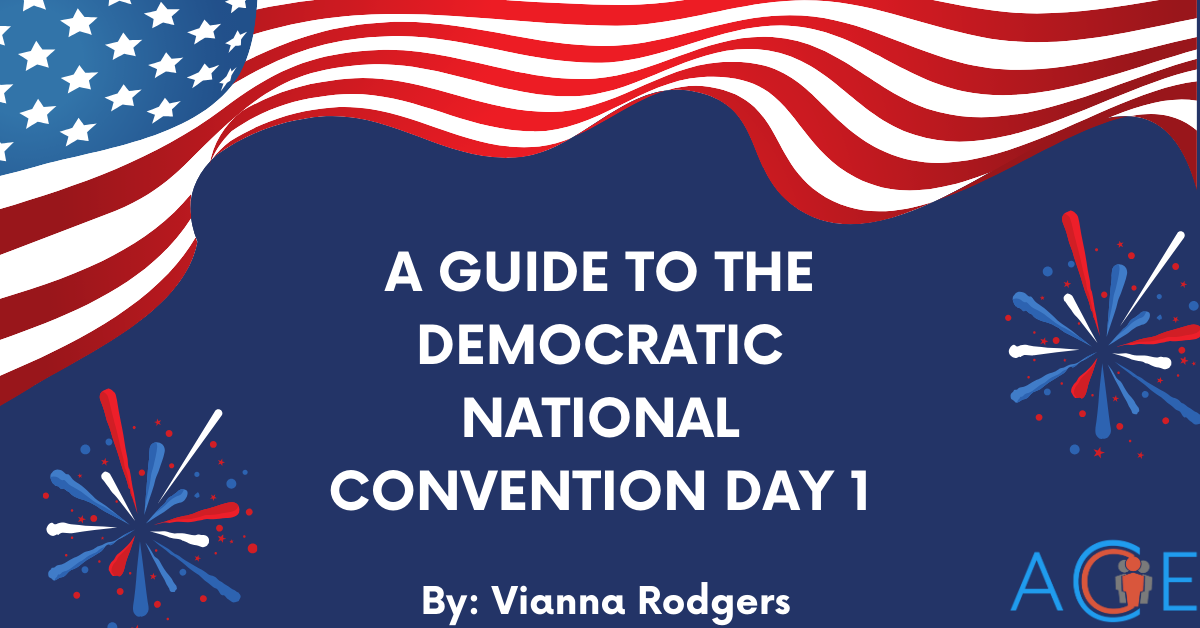Monday, August 19th marks the first night of the Democratic National Convention (DNC) in Chicago, Illinois. The theme of the night is “For the People.” The start of this convention marks one month and a day since President Biden announced he would not be running for re-election and endorsed Vice President Kamala Harris for the presidency.
The first major event of the convention was the ceremonious vote to confirm Tim Walz as the Democratic Party’s nominee for Vice President. In this ceremonious vote, the Democrats’ delegates reaffirmed the nomination of Tim Walz. Walz is expected to officially accept the nomination in his speech Wednesday night. The delegates officially nominated Kamala Harris and Tim Walz as the Party’s nominee for President and Vice President in a virtual meeting earlier this month. The convention will hold Harris’ ceremonious confirmation vote on Tuesday night.
The convention then moved into agenda-setting measures in which the Democratic Party committees gave their committee reports and plans for the Democratic Party’s platform. The convention then moved into hearing speakers pledging their support for Vice President Harris and Governor Walz, speaking on the Democratic Party’s platform for 2024, and criticizing Donald Trump and the Republican Party’s political agenda.
Around 8:10 pm Central Time, Kamala Harris made a surprise appearance on stage. During her quick appearance, she thanked President Joe Biden for his service as president and urged her supporters to unite and turn out to vote this November, stating that “When we fight, we win.”
The host for the first night of the DNC, actor and director Tony Goldwyn, followed Harris, giving a speech in which he argued that this election is about the future of America and that Harris and Trump each represent “two very different futures” for America. He then stated that Harris represents the “future of the middle class, the future of reproductive rights, the future of the climate, security, and schools, and the future of our very democracy.” He describes Harris as a leader who will fight for the futures of all Americans, amping up the crown as he continued to mark Harris’ accomplishments throughout the night.
Key Speakers:
Mallory McMorrow, Michigan State Senator: Addressing Project 2025
State Senator McMorrow came on stage with a copy of Project 2025, a policy plan for a Republican lead administration. She then read excerpts from the plan in which she argued Project 2025 sets the stage for a Trump dictatorship as the policy plan would allow him to appoint an “army of loyalists” to positions of power within the government and weaponize the Department of Defense, going so far as to argue that Trump could make the “FBI his own personal police force” through Project 2025’s policies. She then claims that another Trump presidency would make him “immune to the law” and prosecution because he “handpicked” the current Supreme Court. She then stated that Kamala Harris would protect American democracy, reiterating Harris’s campaign message of “not going back” to a Trump administration.
Steve Kerr, Team USA Men’s Basketball coach and Golden State Warriors coach
Steve Kerr first recapped his experience watching the men’s and women’s Olympic Basketball teams winning gold and the pride he felt for his country in that moment. He then relates his experience as a coach and former basketball player helping him know what kind of leader he and his fellow Americans need. He underscored that Kamala Harris and Tim Walz have the leadership qualities the “country needs.” He also urges unity, comparing the success of twelve Americans winning gold in Paris in Men’s Basketball to the success America could have when its citizens put aside their party identities. Kerr then encourages people to vote, using Stephen Curry’s catchphrase to emphasize his hopes that on election day this November, “we can tell Donald Trump ‘night, night.’”
Shawn Fain, President of the United Automobile Workers
Shawn Fain first thanked President Biden for walking the picket line with Union Automobile Workers in September of 2023. He then praised Kamala Harris, stating that she is “one of us” and a “fighter for the working class” while calling Donald Trump a “scam,” causing the crowd at the DNC to begin chanting “Trump’s a scam.” Fain criticized Trump’s ability to bring back automobile jobs, claiming that “Donald Trump is all talk, and Kamala Harris walks the walk because “Trump did nothing” while union workers were on strike in 2019 while Kamala Harris stood alongside union workers on the picket line.
Alexandria Ocasio-Cortez, Member of the U.S. House of Representatives, New York
Ocasio-Cortez first shared her experience working as a waitress, fighting bills and home foreclosure due to her father’s unexpected death, before being elected congresswoman for the House of Representatives. She states that like herself, Kamala Harris is “from the middle class and for the middle class.” She states that Harris is committed to not only protecting reproductive rights and civil rights and taking down corporate greed but is also committed to “securing a cease-fire in Gaza and bringing hostages home.” Ocasio-Cortez then criticizes Trump for only “fighting for the wealthy and big businesses” and urges Democratic supporters to not only vote Harris and Walz into the White House but to vote to get strong democratic majorities in Congress. Ocasio-Cortez finishes her speech by underscoring Harris’ campaign messages, stating that “the people of this nation will not go back” and that this nation will create a path that is “for the people and by the people.”
Hillary Clinton, Former United States Secretary of State
Hilary Clinton first spoke of women’s first throughout America’s political history, from when women finally gained the right to vote in 1920 to acknowledging Victoria Woodhull, the first woman to run for President. Clinton marked the historic nature of her run for office in 2016 and Kamala Harris’ current run for office, stating that both of their parents would urge them to “keep going” as Clinton urges the American people to “keep going” in order to send Harris to the White House. Clinton then draws similarities between her and Harris as they both got their start in politics as “young lawyers helping children who were abused and neglected,” describing Harris’ background as a prosecutor and contrasting that background to Trump’s status of becoming the first convicted felon to run for president. Clinton’s speech reiterated Harris’ commitment to being “for the people” and highlighted the parallels between her run for the presidency and Harris’ run.
James E. Clyburn, Member of the U.S. House of Representatives, South Carolina
James Clyburn began his speech by announcing the accomplishments of the Biden-Harris administration, including their handling of the COVID-19 pandemic and the nation’s infrastructure. He then targets Project 2025, calling the policy plan “Jim Crow 2.0” and arguing that Trump is only “falsely pleading ignorance” on the subject. Clyburn then quotes the Bible to demonstrate America’s perseverance and that under Harris, America will “march to a more perfect union.”
Jamie Raskin, Member of the U.S. House of Representatives, Maryland
Jamie Raskin first criticized the Republican party, stating that Republican leadership converted the party from a “party of Lincoln” to a “cult of personality.” He then references the January 6 attack on Congress in 2021, highlighting his concern for the protection of democracy if Trump were to be re-elected, citing Trump’s attempt to overturn the 2020 election results as evidence that Trump does not wish to maintain a peaceful democracy.
Jasmine Crockett, Member of the U.S. House of Representatives, Texas
Jasmine Crockett criticizes Republicans for holding legislation that would “secure the border and send aid to Ukraine.” Crockett then states that Harris has “lived the American Dream” while Trump has been “America’s Nightmare,” arguing that Harris is the only candidate qualified for the position of president. Crockett then draws parallels between her career as a public defender to Harris’ career as a prosecutor, telling the story of how Harris gave her advice when Crockett was first elected to the House of Representatives, leaving an impactful mark on the congresswoman. She states that when Harris is elected as president, “America will be a beacon of hope once more.”
Joint Remarks: Amanda and Josh Zurawski, Texas; Kaitlyn Joshua, Louisiana; Hadley Duvall, Kentucky
The Zurawskis, Kaitlyn Joshua, and Hadley Duvall each shared their experience with receiving reproductive health in their respective states. They pledge their support for Kamala Harris and desire for a national bill to ensure the right to an abortion and reproductive freedom.
Andy Beshear, Governor of Kentucky
Andy Beshear first criticized Trump and Vance’s stance on abortion rights and the Supreme Court’s overturning of Row vs. Wade, arguing that “all women should have the freedom to make their own decisions.” He remarked on Harris’ call and action of unity, stating that Harris acts to support all Americans, not just the ones who vote for her. He reiterated the need for Americans to “love thy neighbor” in a time of division.
Reverend Raphael G. Warnock, United States Senator, Georgia
Raphael Warnock highlighted the Democrats’ accomplishments in 2020, stating that they not only sent Biden and Harris to the White House, but they also “vaccinated [their] citizens” and “stood by [their] small businesses.” Warnock criticized Trump’s handling of the COVID-19 pandemic and his instigation of the January 6th insurrection that led to “voter suppression laws in Georgia and around the country.” He argues that this election decides if the nation will “embrace all of us or just some of us” and that Trump seeks to divide the American people while Kamala Harris and Tim Walz represent “the new way forward.”
Chris Coons, United States Senator, Delaware
Chris Coons praised President Biden’s accomplishments during his presidency and thanked Jill Biden for her continued support of Joe Biden. He describes Biden as a compassionate man and friend who has “done so much for this country” and thanked Biden for his courage in “fighting for our democracy.”
Dr. Jill Biden, First Lady of the United States
Dr. Jill Biden compared Joe Biden and Kamala Harris’ character, stating that they know how to “heal wounds” and “serve the community.” She urges Harris supporters to “fight and win” together, throwing her support behind Harris and reiterating the Democratic Party’s commitment to the transfer of power between Joe Biden and Kamala Harris.
Joe Biden, President of the United States
Introduced by his daughter Ashley Biden, Joe Biden gave the keynote speech for Night 1 of the DNC. He walked onto the stage to chants of “We love Joe” from the crowd and replied, “America, I love you.” He then moved to attack Trump’s response to losing the 2020 election, stating that “you can’t only love America when you win” and arguing that the change in leadership allowed “democracy to prevail” but in this new election cycle the people must ensure that “democracy is preserved.” Biden then spoke on the rise of extremism and anti-semitism that has occurred in this country since Trump’s presidency, citing the Charlottesville riots in 2017 as one of the compelling factors that encouraged him to run for President in 2020. He then reiterated his commitment to the middle class and dedication to “all Americans.” Biden also addressed the protesters outside the convention, who are calling for a ceasefire in Gaza, stating that they “have a point” and promising that his Secretary of State is working to bring the hostages home and increase the amount of humanitarian aid entering Gaza. Biden also called for a ceasefire and an end to the war in Gaza.
Crediting his administration with getting control of the COVID-19 pandemic, creating the “strongest economy in the world,” creating record jobs and small business growth, passing stronger gun control, reducing the cost of higher education, and lowering inflation, Biden claims that America is “moving in the right direction.” He then closes with the remark that “America is a nation of possibility” and that Harris and Walz understand that about America, reiterating his commitment and support for Kamala Harris’ campaign for president.


